Earlier in June, I wrote a blog post called Why Music Education Is Not Important, a controversial piece where I discussed the criticism and dismissal of music education as a subject. While the post highlighted real concerns we all likely experience in this profession, if you took time to read through it, you’ll know I’m a strong advocate of music education and its place in public schools. And if you’re reading this post, hopefully you are too!
Since I’ve already written a piece talking about all of the criticism music education faces, I wanted to continue the conversation by writing a new piece that highlights the overwhelming benefits. I wanted to write this for the next person who asks you, “Is that even a real job?”
Music education is magical. It changes lives. It turns students into better humans and makes the world a more beautiful place. And if anyone has ever made you doubt that, I want you to keep reading.
Music is for Everyone
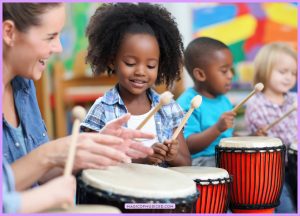 Here’s the truth no teacher wants to admit: not every student enjoys school. There are some kids who thrive in academics, but there are also plenty who do not. If you think about your current social circle, you probably can identify your friends who are excellent academics, but you’ll inevitably also know someone who is more creative and tactile. Students fall into these categories too, and not every child is going to thrive in a traditional academic setting.
Here’s the truth no teacher wants to admit: not every student enjoys school. There are some kids who thrive in academics, but there are also plenty who do not. If you think about your current social circle, you probably can identify your friends who are excellent academics, but you’ll inevitably also know someone who is more creative and tactile. Students fall into these categories too, and not every child is going to thrive in a traditional academic setting.
Music is different. When a student steps into the music room, they’re not just another body at a desk. They’re a musician. They’re a valuable part of the group, and what they learn, create, and perform directly impacts the success of the whole class. It’s an environment where individual strengths become collective power.
I see it over and over again. It’s transformation that rarely happens anywhere else in the school building:
- The socially isolated student who finds their friend group
- The student with ADHD who finally has a place to release all their excess energy
- The student who learns differently and thrives with music’s hands-on approach
- The quiet student who finds their voice through their instrument
- The student who craves routine and finds comfort in music’s structure
- The anxious student who discovers that music calms their mind
It’s worth noting that many of the examples referenced on this list are either students who may be neurodivergent or deal with social or mental health concerns. This isn’t a coincidence. Traditional classrooms, with their emphasis on sitting still and demonstrating knowledge through standardized methods, often leave these students feeling unsuccessful or out of place.
Music education creates space for different types of minds to flourish. The physical engagement of playing an instrument gives kinesthetic learners something to do with their hands and bodies. The act of emoting through music provides an outlet for students that might be difficult to put into words.
What’s particularly powerful is that in the music room, these differences aren’t seen as deficits to be minimized. Instead, they become strengths that contribute to the overall musical experience. This is why music is often the sole reason why some students choose to come to school. For those students, it’s the difference between feeling like they belong or feeling like they’re constantly out of place. When music programs are minimized or cut, it removes a critical lifeline for the students who need a different environment in which they can learn and succeed.
Learning Music is a Full Brain Workout!
I’ll say it again. There is no mind like a musician’s mind. Few activities engage the brain as completely as music does. When a music student is singing or playing an instrument, they’re processing many things at once:
- Pulse and Steady Beat
- Counting and Rhythm
- Listening Skills
- Fine Motor Skills
- Expression
There is an amazing TED-Ed video that beautifully highlights all the ways music is beneficial for the brain. I’ve actually shown this video to quite a few parents over the years! It’s a wonderful video for advocating music education. Make sure you give this video a watch if you haven’t already seen it ⬇️
Emotional Regulation and Stress Relief
I can imagine that growing up as a student in 2025 comes with more pressure than ever: increased academic loads, emphasis on standardized tests, and the constant world of social media. Today’s students are dealing with stress levels that previous generations may never have experienced.
Music education is a release from the outside pressure. It’s an environment where grades, test scores, and likes on a screen don’t define a student’s worth. In the music room, they can just show up, make music, and be themselves. For those students dealing with chronic stress (and it’s a lot of them), music can feel almost therapeutic. Learning a new piece or working through a part that demands their full attention pulls their focus away from whatever else might be bothering them or weighing them down.
According to an article from the CDC, anxiety, behavior problems and depression are among the most common mental disorders in children. And while music education isn’t a cure, it is a powerful outlet for students to process their emotions.
Music education provides emotional support through:
- A safe space to express difficult feelings
- A break from grades and social pressure
- Routine and structure
- Confidence-building through performance
Music education gives students an emotional outlet they can use for the rest of their lives. Long after they graduate, they’ll still have their instrument, their voice, and the knowledge that music can be a source of comfort when life gets overwhelming.
Music Education Leads to Creativity and Self-Expression

Kids are trying to figure out a lot of things when they’re going to school. They’re trying to learn who they are, what they’re good at, and how they want the world to see them. For many students, traditional academic subjects don’t leave much room to explore their identity or express themselves in a way that feels authentic.
Music is a bit different. While a math problem only has one correct answer, a piece of music can be approached in many ways. Check out this playlist of the song Summertime which has over 70 covers by different musical artists!
It’s an example of there being no right or wrong way to interpret a piece of music. Students are given permission to make choices about dynamics, phrasing, and expression that reflect their own personality and artistic vision. This kind of creative decision-making is rarely found in other school subjects where there’s typically one correct answer. In other words, music gives students a voice they may not find anywhere else.
Musicians are Team Players
While there are many successful solo musicians, music education is far from an isolating subject. Most music programs center around ensemble experiences where students must work together. Unlike group projects in other classes where one student might get stuck doing all the work, music ensembles require every single person to do their part.
In an ensemble setting, every musical part is critical. If the trumpets don’t know their part in band, it affects the whole group. If the sopranos sing too loudly, they drown out the rest of the choir. If a percussionist skips the concert, the entire performance might drag. This creates a sense of accountability that’s different from their other classes. After all, the consequences for forgetting an ELA assignment are far different than forgetting to practice for a concert.
Music ensembles teach teamwork through:
- Shared responsibility for the ensemble’s success
- Active listening and adjustment to others
- Supporting classmates
- The roles of individual players within a larger group
- Working toward common goals
Musicians are Risk-Takers
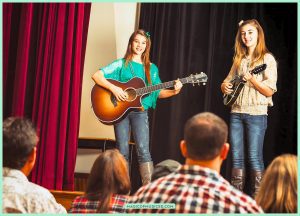
Did you know musicians are some of the biggest risk-takers? Music education may not seem like a big deal, but its learning process involves trying new things, making mistakes and putting it all out there in front of an audience. That can be really scary!
Every time a student steps up for a solo audition, performs at a concert, or even just plays a passage in front of their section, they’re taking a risk. In music, preparation shows. Students learn over time that the effort they put in during their practice directly impacts the success of their performance.
The music classroom is also an environment where mistakes are just part of the learning. I frequently tell my students there is no such thing as perfection and that even the greatest musicians make mistakes from time to time. What matters is how you handle those mistakes and what you do next.
Students learn to push through when things don’t go as planned. The student who cracks on a high note keeps going. The student who comes in at the wrong time figures out how to jump back in. There are no do-overs in live performance, so students develop real resilience and the ability to recover gracefully.
Just like teamwork, risk-taking is a valuable skill where musicians are uniquely positioned to thrive. Former music students become employees willing to speak up in meetings, take on challenging projects, and step into leadership roles. The same willingness to step outside their comfort zone in music often gives them the confidence to tackle challenges in other subjects. Keep reading to find out how that translates into stronger academic performance.
Music Education Improves Academic Performance in Other Subjects
Sometimes, music educators are faced with the argument that music education distracts and negatively impacts the performance of students in other subjects. The reality is often the opposite, and there is data to support this.
Multiple studies have shown that music education can boost achievement even in the early and middle grades. A study of over 4,700 U.S. elementary and middle school students found that those in high-quality music programs scored significantly higher on standardized tests in English and math than students enrolled in schools with low-quality music programs.
Another long-term study followed students from Grade 1 through Grade 7 and found that early musical abilities, especially rhythm skills, predicted later school success and accounted for 11% of the variance in GPA by the end of middle school.
The Arts Education Partnership also reported that consistent participation in music is linked to higher reading and math scores in elementary grades, and these benefits grow the longer students stay involved in music.
As music educators, these results make sense. The brain training that happens through music education creates lasting changes in how students process information, solve problems, and approach learning in general. These skills are part of the long-term music education benefits that serve students well beyond high school and college.
Music Education Leads to Lasting Relationships
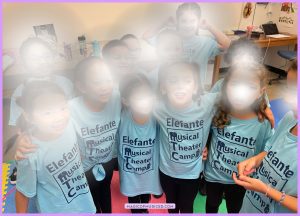
Last, and possibly most important of all, music isn’t just another class. It’s an experience that leads to an undeniable connection among students. Many students meet their lifelong friends in music class. Students who might never talk in the hallway become closer when they’re sitting next to each other in band or choir. They may share the excitement of nailing a difficult section of a piece and support each other through performance nerves. They’ll share the moments of celebration when a performance or competition goes well. This creates powerful bonds and shared experiences that often last well beyond graduation.
This is why music education matters so much. When we advocate for our music programs, we’re fighting for more than just a subject. We’re fighting for the quiet students who find their voice through learning an instrument, the students who grow in confidence through every performance, and the lifelong friendships that form when young people create beautiful music together. Music education isn’t just special. It changes lives.
If you’d like to keep creating magical moments in your music classroom, I’d love to share the Chamber of Freebies with you. It’s my growing collection of ready-to-use lessons, printables, and digital activities designed to save you time and spark inspiration. Joining is free, and it’s there whenever you need a little extra support for you and your students. Click below to join and start exploring free music resources today ⬇️
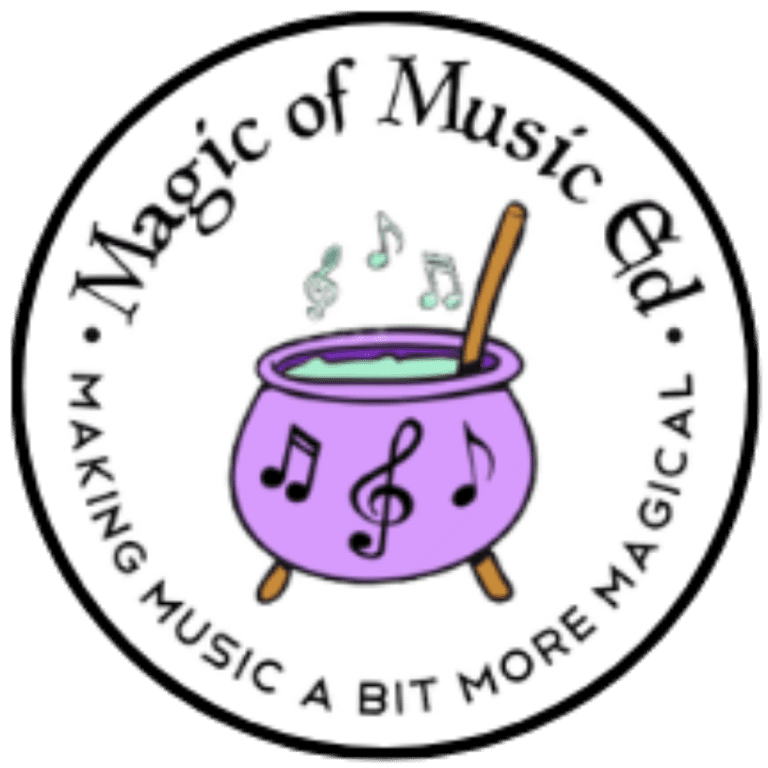
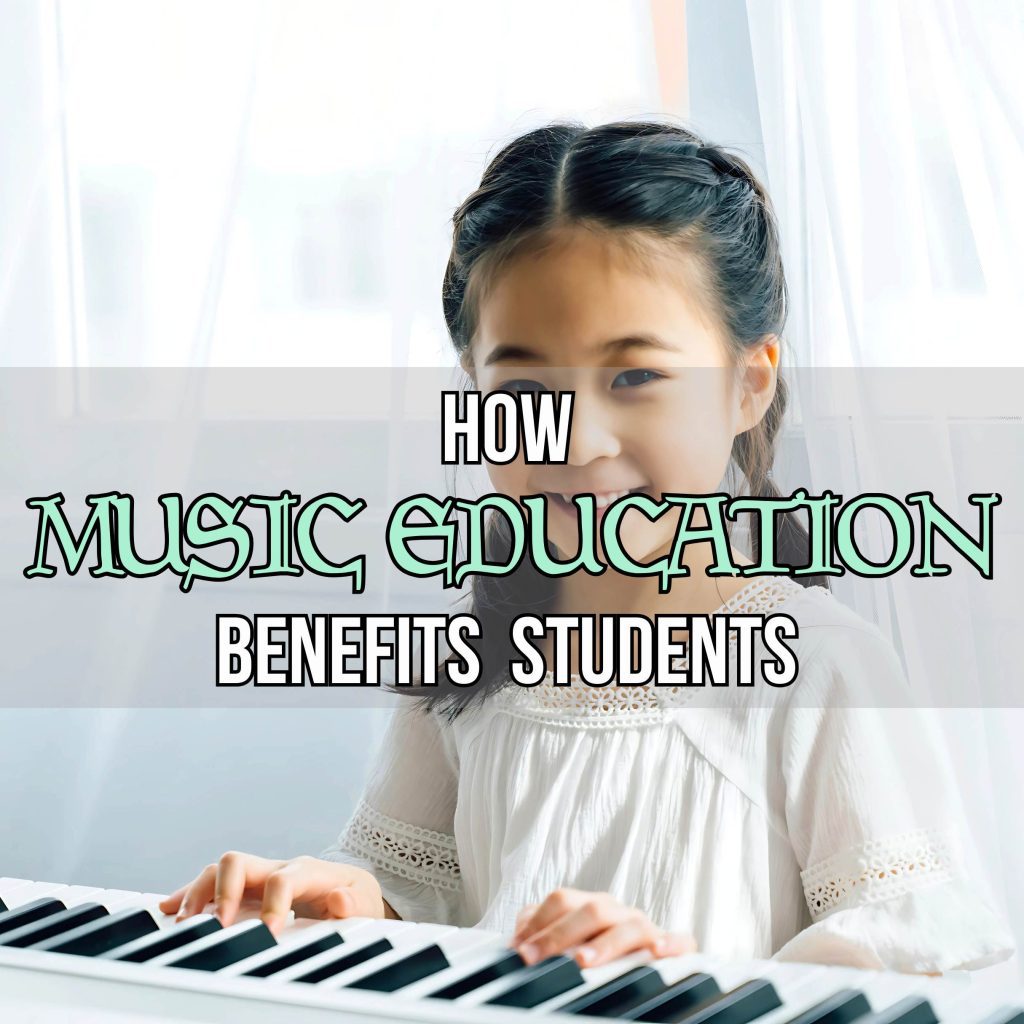

Hello Suzanne,
This is a wonderful article that perfectly articulates the many benefits of music education. As a fellow music educator, I couldn’t agree more with every point you’ve made.
At my own educational platform for the Tabla, Tablatheka.com, I often see these benefits firsthand. The discipline and focus required to learn a rhythmic instrument like the Tabla have a profound impact on a student’s cognitive skills and overall well-being. It truly is a magical process to witness.
Thank you for being such a passionate advocate for music education!
Thank you so much for sharing! I’m so excited to check out your website too!
Thank You for this blog. The point of view is absolutely correct for children of Gen Z.
Adults normally dont prefer to learn music thinking that its the age of kids to learn and not their age anymore. Also, Classical music is less preffered as compared to the other music forms.
You righly said that we should see students interest first and less from the traditional point of view. I would like understand on a point that student wants to sing popular numbers from the Day he joins a music class but does not know the basics of music or rythm and does not want to correct them also as he considers them to be a part of classical training only. We run a music school in india and face this problem regularly.
Thank you for sharing your perspective! I agree that balancing student interests with teaching the basics can definitely be a challenge.